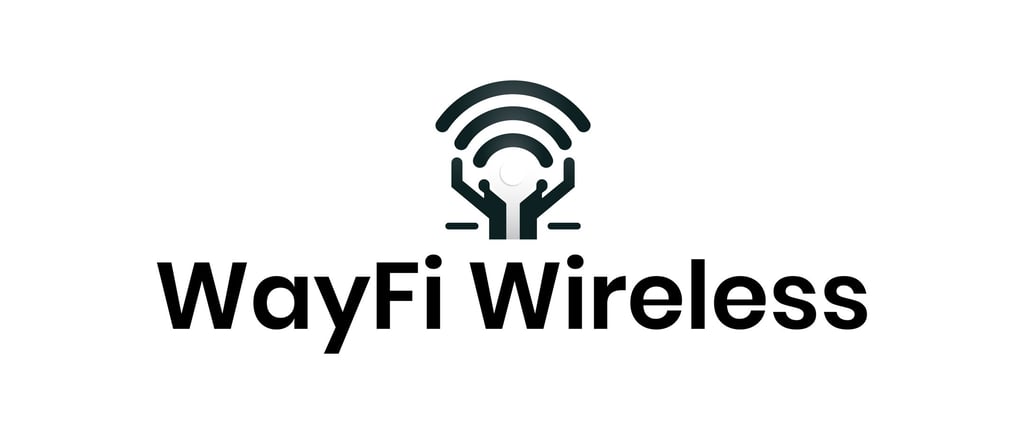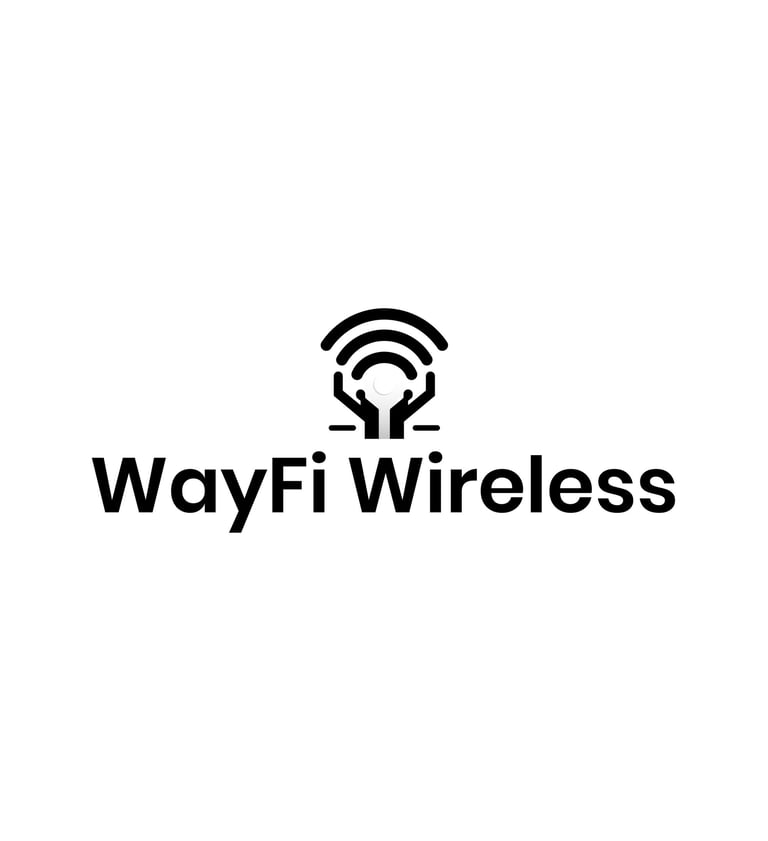What is Hotspot 2.0 & Passpoint? Seamless & Secure Wi-Fi Explained
Discover how Hotspot 2.0 and Passpoint provide seamless, secure, and automatic Wi-Fi connectivity. Learn how this technology enhances public Wi-Fi, enterprise networks, and mobile carrier integration.
BLOG
WayFi Wireless
1/29/20254 min read


In today’s hyperconnected world, reliable and secure Wi-Fi is a must-have, whether at home, in the office, or on the go. Hotspot 2.0 is the innovative technology transforming how devices connect to public and private Wi-Fi networks, making the process seamless, secure, and automatic. But what exactly is Hotspot 2.0, and how does it work? In this article, we’ll dive deep into the concept, benefits, and practical applications of Hotspot 2.0, including its integration with Passpoint technology.
What is Hotspot 2.0?
Hotspot 2.0 is a wireless networking standard developed to improve the way devices connect to Wi-Fi networks. Unlike traditional Wi-Fi, where users manually select and log in to a network, Hotspot 2.0 enables automatic and secure connections.
This technology leverages the IEEE 802.11u standard, a protocol designed to enable seamless roaming between Wi-Fi networks, similar to how mobile phones roam between cellular networks. Hotspot 2.0 is widely supported by modern smartphones, tablets, laptops, and enterprise networking equipment.
How Does Hotspot 2.0 Work?
Hotspot 2.0 uses Passpoint technology (certified by the Wi-Fi Alliance) to automate and secure the connection process. Here’s how it works:
Automatic Network Discovery
Devices equipped with Passpoint profiles automatically discover and prioritize compatible Hotspot 2.0-enabled networks. There’s no need for users to search for Wi-Fi or manually select a network.Secure Authentication
Instead of relying on traditional passwords or captive portals, Passpoint uses SIM-based credentials, digital certificates, or other secure authentication methods to verify a device’s access.Seamless Roaming
Hotspot 2.0 supports roaming agreements between network operators. For example, a smartphone can seamlessly transition from a Wi-Fi network in one location to another without user intervention, much like how cellular networks handle roaming.Data Encryption
Connections are encrypted using WPA2-Enterprise or WPA3 protocols, ensuring the highest level of security for users.
Key Benefits of Hotspot 2.0
✔ Seamless Connectivity
Users connect to Wi-Fi automatically without logging in or entering credentials manually.
✔ Enhanced Security
Hotspot 2.0 encrypts all connections and uses secure authentication methods, significantly reducing the risk of data theft or unauthorized access.
✔ Improved User Experience
Passpoint eliminates the need for captive portals and login screens, streamlining the process for users in public spaces like airports, hotels, and cafes.
✔ Carrier and Enterprise Integration
Mobile carriers and enterprise networks can integrate Hotspot 2.0 to offer better coverage and improved user experience, especially in high-density areas.
✔ Efficient Roaming
Enables users to roam between Wi-Fi networks without interruptions, making it ideal for travelers and business users.
What is Passpoint, and How Does it Relate to Hotspot 2.0?
Passpoint is the certification program created by the Wi-Fi Alliance to ensure devices and networks meet the Hotspot 2.0 standard. It ensures:
Automatic connections to trusted networks.
Secure authentication using methods like SIM-based credentials or certificates.
Roaming support between different Wi-Fi networks.
Passpoint has become a key feature for enterprises, public Wi-Fi providers, and mobile carriers looking to deliver seamless and secure wireless experiences to their users.
Where is Hotspot 2.0 Used?
Hotspot 2.0 is increasingly adopted in locations where seamless and secure Wi-Fi is critical. Some examples include:
Airports and Hotels: Travelers can automatically connect to Wi-Fi without needing to log in every time.
Retail and Restaurants: Businesses provide an enhanced customer experience by offering secure, hassle-free Wi-Fi.
Universities and Campuses: Students and faculty enjoy consistent, secure connectivity across campus.
Stadiums and Arenas: High-density venues benefit from efficient and seamless network connections.
Smart Cities: Municipal networks use Hotspot 2.0 to provide city-wide public Wi-Fi that’s secure and easy to use.
Hotspot 2.0 vs. Traditional Wi-Fi
Connection Process:
Traditional Wi-Fi: Manual login or captive portal required
Hotspot 2.0: Automatic, seamless authentication
Security:
Traditional Wi-Fi: Password-based, less secure
Hotspot 2.0: Encrypted with WPA2/WPA3 and Passpoint
Roaming:
Traditional Wi-Fi: Limited roaming capabilities
Hotspot 2.0: Supports seamless roaming between networks
User Experience:
Traditional Wi-Fi: Inconsistent and requires manual intervention
Hotspot 2.0: Streamlined, automatic, and hassle-free
How to Enable Hotspot 2.0 on Your Device
Most modern smartphones, laptops, and tablets already support Hotspot 2.0. Follow these steps to enable it:
iOS Devices
Go to Settings > Wi-Fi > Automatic Hotspot.
Ensure Wi-Fi Calling is enabled for seamless integration with cellular carriers.
Android Devices
Open Settings > Network & Internet > Wi-Fi Preferences.
Enable Hotspot 2.0 or Passpoint (this option may appear under Advanced Wi-Fi Settings).
Windows Devices
Navigate to Settings > Network & Internet > Wi-Fi.
Look for Hotspot 2.0 networks and toggle it on.
MacOS Devices
Open System Preferences > Network > Wi-Fi.
Select the Allow Hotspot 2.0 networks option.
Challenges and Considerations
While Hotspot 2.0 offers numerous benefits, there are some challenges to consider:
Device Compatibility: Older devices may not support Hotspot 2.0 or Passpoint technology.
Network Configuration: Setting up Hotspot 2.0 requires proper configuration and carrier partnerships.
Adoption Rates: Some public Wi-Fi networks have yet to implement Hotspot 2.0, limiting its widespread use.
The Future of Hotspot 2.0
As Wi-Fi networks continue to evolve, Hotspot 2.0 and Passpoint will play a central role in delivering seamless, secure, and scalable wireless connectivity. The technology is expected to expand further with the rollout of Wi-Fi 6 and Wi-Fi 7, offering faster speeds, lower latency, and better performance in high-density environments.
Conclusion
Hotspot 2.0 represents the future of Wi-Fi connectivity, providing users with an effortless and secure experience. Whether you’re a business looking to enhance customer satisfaction or a carrier seeking to improve indoor coverage, adopting Hotspot 2.0 and Passpoint is a smart move.
Ready to upgrade your network? Contact us today to learn how WayFi Wireless can help you implement Hotspot 2.0 and deliver seamless, secure Wi-Fi to your users!
WayFi Wireless
Helpful Pages
SUBSCRIBE TO OUR NEWSLETTER
© 2024 - 2025. All rights reserved.
Browser Extentions
TOOLS


